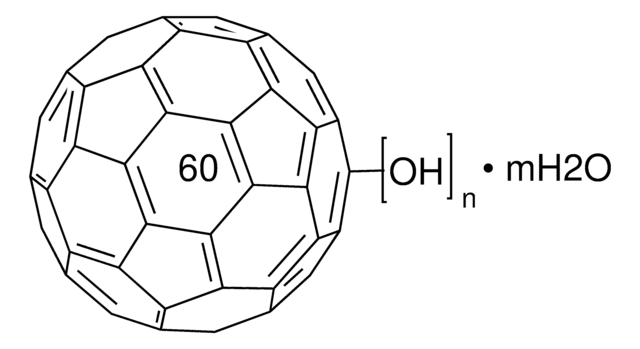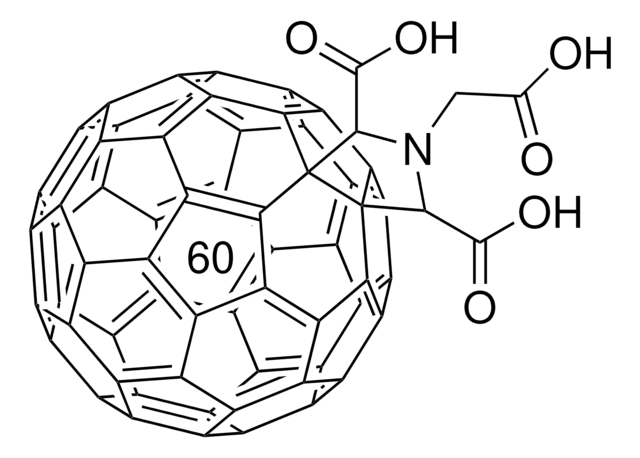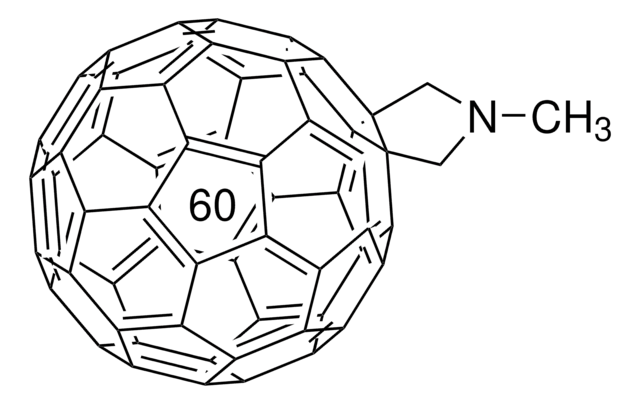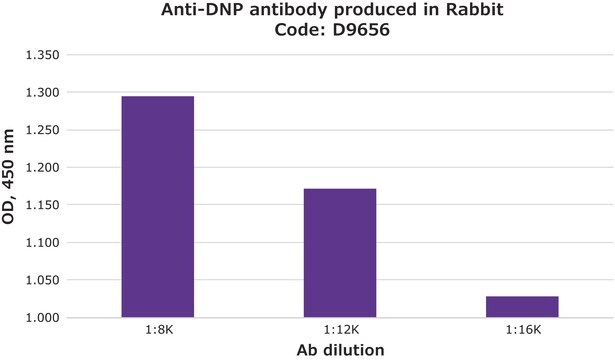709093
C60 Pyrrolidine tris-acid ethyl ester
97% (HPLC)
About This Item
Productos recomendados
Nivel de calidad
Ensayo
97% (HPLC)
Formulario
powder
mp
240-245 °C
solubilidad
chlorobenzene: soluble
organic solvents: soluble
toluene: soluble
cadena SMILES
CCOC(=O)CN1C(C(=O)OCC)C23c4c5c6c7c8c9c(c%10c%11c2c%12c%13c4c%14c%15c5c%16c7c%17c8c%18c%19c9c%10c%20c%21c%11c%12c%22c%23c%13c%14c%24c%25c%15c%16c%26c%17c%27c%18c%28c%19c%20c%29c%21c%22c%30c%23c%24c%31c%25c%26c%27c%32c%28c%29c%30c%31%32)C36C1C(=O)OCC
Categorías relacionadas
Descripción general
Aplicación
Palabra de señalización
Warning
Frases de peligro
Consejos de prudencia
Clasificaciones de peligro
Eye Irrit. 2 - Skin Irrit. 2 - STOT SE 3
Órganos de actuación
Respiratory system
Código de clase de almacenamiento
11 - Combustible Solids
Clase de riesgo para el agua (WGK)
WGK 3
Punto de inflamabilidad (°F)
Not applicable
Punto de inflamabilidad (°C)
Not applicable
Elija entre una de las versiones más recientes:
¿Ya tiene este producto?
Encuentre la documentación para los productos que ha comprado recientemente en la Biblioteca de documentos.
Los clientes también vieron
Artículos
Find various photovoltaic and bioscience-based applications of fullerenes.
Optoelectronic Devices Based on Diketopyrrolopyrrole (DPP)-containing Conjugated Small Molecules
Global Trade Item Number
| Número de referencia del producto (SKU) | GTIN |
|---|---|
| 709093-250MG | 4061833500590 |
Nuestro equipo de científicos tiene experiencia en todas las áreas de investigación: Ciencias de la vida, Ciencia de los materiales, Síntesis química, Cromatografía, Analítica y muchas otras.
Póngase en contacto con el Servicio técnico





![[6.6] Diphenyl C62 bis(butyric acid methyl ester)(mixture of isomers) 99.5%](/deepweb/assets/sigmaaldrich/product/structures/213/478/93c26667-6556-40bb-8cbe-350bdbabfc00/640/93c26667-6556-40bb-8cbe-350bdbabfc00.png)

![[6,6]-Phenyl C61 butyric acid methyl ester ≥99%](/deepweb/assets/sigmaaldrich/product/structures/359/221/d990c746-0960-4c69-bf76-fe09b193824d/640/d990c746-0960-4c69-bf76-fe09b193824d.png)
![[5,6]-Fullerene-C70 98%](/deepweb/assets/sigmaaldrich/product/structures/316/205/6bbd4872-2192-4042-bd5c-a2b6c4edba43/640/6bbd4872-2192-4042-bd5c-a2b6c4edba43.png)

![[6,6]-Phenyl C71 butyric acid methyl ester 99%](/deepweb/assets/sigmaaldrich/product/structures/716/624/9fb9f2f0-ae99-429f-8d3a-b12267976a4d/640/9fb9f2f0-ae99-429f-8d3a-b12267976a4d.png)